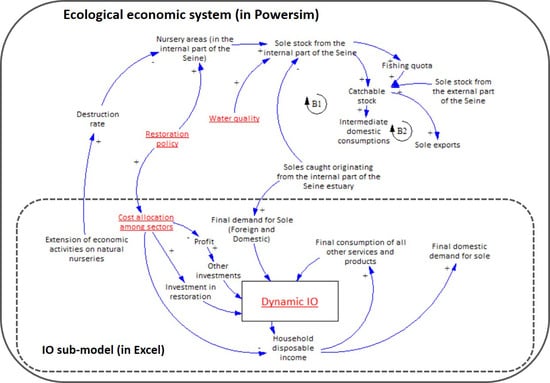Fully Dynamic Input-Output/System Dynamics Modeling for Ecological-Economic System Analysis
Abstract
1. Introduction
2. Materials and Methods
2.1. Study Area
2.2. Model Development
2.2.1. Model Overview
2.2.2. Input-Output (IO) Modeling: The Economic Sub-System
2.2.2.1. Base IO Table
2.2.2.2. Dynamization of the IO Table
2.2.3. System Dynamics (SD) Modeling: The Ecological System
2.3. Scenario Development
3. Results
3.1. Policy Impact Assessments
3.2. Policy Sensitivity Analysis
4. Discussion
4.1. Model Development and Analysis
4.2. Future Research Topics
Supplementary Materials
Author Contributions
Funding
Acknowledgments
Conflicts of Interest
References
- Limburg, K.E.; O’Neill, R.V.; Costanza, R.; Farber, S. Complex systems and valuation. Ecol. Econ. 2002, 41, 409–420. [Google Scholar] [CrossRef]
- Costanza, R.; Wainger, L.; Folke, C.; Mäler, K.G. Modeling complex ecological economic systems. Bioscience 1993, 43, 545–555. [Google Scholar] [CrossRef]
- Costanza, R.; Ruth, M. Using dynamic modeling to scope environmental problems and build consensus. Environ. Manag. 1998, 22, 183–195. [Google Scholar] [CrossRef]
- Arrow, K.; Dasgupta, P.; Mäler, K.G. Evaluating projects and assessing sustainable development in imperfect economies. Environ. Resour. Econ. 2003, 26, 647–685. [Google Scholar] [CrossRef]
- Dasgupta, P.; Mäler, K.G. The economics of non-convex ecosystems: Introduction. Environ. Resour. Econ. 2003, 26, 499–525. [Google Scholar] [CrossRef]
- Uehara, T. Ecological threshold and ecological economic threshold: Implications from an ecological economic model with adaptation. Ecol. Econ. 2013, 93, 374–384. [Google Scholar] [CrossRef]
- Levin, S.; Xepapadeas, T.; Crépin, A.-S.; Norberg, J.; de Zeeuw, A.; Folke, C.; Hughes, T.; Arrow, K.; Barrett, S.; Daily, G.; et al. Social-ecological systems as complex adaptive systems: Modeling and policy implications. Environ. Dev. Econ. 2013, 18, 111–132. [Google Scholar] [CrossRef]
- Folke, C.; Carpenter, S.; Elmqvist, T.; Gunderson, L.; Holling, C.S.; Walker, B. Resilience and sustainable development: Building adaptive capacity in a world of transformations. AMBIO A J. Hum. Environ. 2002, 31, 437–440. [Google Scholar] [CrossRef]
- Schlüter, M.; Hinkel, J.; Bots, P.; Arlinghaus, R. Application of the SES framework for model-based analysis of the dynamics of social-ecological systems. Ecol. Soc. 2014, 19, 36. [Google Scholar] [CrossRef]
- Costanza, R.; Daly, L.; Fioramonti, L.; Giovannini, E.; Kubiszewski, I.; Mortensen, L.F.; Pickett, K.E.; Ragnarsdottir, K.V.; De Vogli, R.; Wilkinson, R. Modelling and measuring sustainable wellbeing in connection with the UN Sustainable Development Goals. Ecol. Econ. 2016, 130, 350–355. [Google Scholar] [CrossRef]
- Hardt, L.; O’Neill, D.W. Ecological macroeconomic models: Assessing current developments. Ecol. Econ. 2017, 134, 198–211. [Google Scholar] [CrossRef]
- Motesharrei, S.; Rivas, J.; Kalnay, E.; Asrar, G.R.; Busalacchi, A.J.; Cahalan, R.F.; Cane, M.A.; Colwell, R.R.; Feng, K.; Franklin, R.S.; et al. Modeling sustainability: Population, inequality, consumption, and bidirectional coupling of the Earth and Human Systems. Natl. Sci. Rev. 2016, 3, 470–494. [Google Scholar] [CrossRef]
- Kim, K.; Kratena, K.; Hewings, G.J.D. The extended econometric input-output model with heterogeneous household demand system. Econ. Syst. Res. 2015, 27, 257–285. [Google Scholar] [CrossRef]
- Miller, R.E.; Blair, P.D. Input-Output Analysis; Cambridge University Press: Cambridge, UK, 2009. [Google Scholar]
- Berg, M.; Hartley, B.; Richters, O. A stock-flow consistent input-output model with applications to energy price shocks, interest rates, and heat emissions. New J. Phys. 2015, 17. [Google Scholar] [CrossRef]
- Cordier, M.; Uehara, T.; Weih, J.; Hamaide, B. An input-output economic model integrated within a system dynamics ecological model: Feedback loop methodology applied to fish nursery restoration. Ecol. Econ. 2017, 140, 46–57. [Google Scholar] [CrossRef]
- Jackson, T.; Drake, B.; Victor, P.; Kratena, K.; Sommer, M. Foundations for an Ecological Macroeconomics: Literature Review and Model Development; WWWforEurope Working Paper, No. 65; WWWforEurope: Vienna, Austria, 2014. [Google Scholar]
- Gilbert, N. Agent-Based Models; Sage Publications: Thousand Oaks, CA, USA, 2008. [Google Scholar]
- Boumans, R.; Costanza, R.; Farley, J.; Wilson, M.A.; Portela, R.; Rotmans, J.; Villa, F.; Grasso, M. Modeling the dynamics of the integrated earth system and the value of global ecosystem services using the GUMBO model. Ecol. Econ. 2002, 41, 529–560. [Google Scholar] [CrossRef]
- Motesharrei, S.; Rivas, J.; Kalnay, E. Human and nature dynamics (HANDY): Modeling inequality and use of resources in the collapse or sustainability of societies. Ecol. Econ. 2014, 101, 90–102. [Google Scholar] [CrossRef]
- Uehara, T.; Nagase, Y.; Wakeland, W. Integrating economics and system dynamics approaches for modelling an ecological-economic system. Syst. Res. Behav. Sci. 2015, 33, 515–531. [Google Scholar] [CrossRef]
- Swinerd, C.; McNaught, K.R. Design classes for hybrid simulations involving agent-based and system dynamics models. Simul. Model. Pract. Theory 2012, 25, 118–133. [Google Scholar] [CrossRef]
- Wallentin, G.; Neuwirth, C. Dynamic hybrid modelling: Switching between AB and SD designs of a predator-prey model. Ecol. Model. 2017, 345, 165–175. [Google Scholar] [CrossRef]
- Cuvilliez, A.; Deloffre, J.; Lafite, R.; Bessineton, C. Morphological responses of an estuarine intertidal mudflat to constructions since 1978 to 2005: The Seine estuary (France). Geomorphology 2009, 104, 165–174. [Google Scholar] [CrossRef]
- Rochette, S.; Rivot, E.; Morin, J.; Mackinson, S.; Riou, P.; Le Pape, O. Effect of nursery habitat degradation on flatfish population: Application to Solea solea in the Eastern Channel (Western Europe). J. Sea Res. 2010, 64, 34–44. [Google Scholar] [CrossRef]
- HAROPA Ports de Paris Seine Normandie. Rapport D’activité 2013; HAROPA Ports de Paris Seine Normandie: Paris, France, 2013. [Google Scholar]
- Ducrotoy, J.P.; Dauvin, J.C. Estuarine conservation and restoration: The Somme and the Seine case studies (English Channel, France). Mar. Pollut. Bull. 2008, 57, 208–218. [Google Scholar] [CrossRef] [PubMed]
- Tecchio, S.; Chaalali, A.; Raoux, A.; Tous Rius, A.; Lequesne, J.; Girardin, V.; Lassalle, G.; Cachera, M.; Riou, P.; Lobry, J.; et al. Evaluating ecosystem-level anthropogenic impacts in a stressed transitional environment: The case of the Seine estuary. Ecol. Indic. 2015, 61, 833–845. [Google Scholar] [CrossRef]
- Sterman, J.D. Business Dynamics: Systems Thinking and Modeling for a Complex World; Irwin/McGraw-Hill Boston: Boston, MA, USA, 2000. [Google Scholar]
- European Commission. ESA Supply, Use and Input-Output Tables. 2014. Available online: http://ec.europa.eu/eurostat/web/esa-supply-use-input-tables (accessed on 27 May 2018).
- Jackson, R.W. Regionalizing national commodity-by-industry accounts. Econ. Syst. Res. 1998, 10, 223–238. [Google Scholar] [CrossRef]
- Lahr, M.L. Reconciling domestication techniques, the notion of Re-exports and some comments on regional accounting. Econ. Syst. Res. 2001, 13, 165–179. [Google Scholar] [CrossRef]
- McDonald, G. Integrating Economics and Ecology: A Systems Approach to Sustainability in the Auckland Region. PhD Thesis, Massey University, Palmerston North, New Zealand, 2005. [Google Scholar]
- Gohin, A. The specification of price and income elasticities in computable general equilibrium models: An application of latent separability. Econ. Model. 2005, 22, 905–925. [Google Scholar] [CrossRef]
- Klein, L.R.; Welfe, A.; Welfe, W. Principles of Macroeconometric Modeling; North-Holland Publishing Co.: Amsterdam, The Netherlands, 1999. [Google Scholar]
- Conway, R.S. The Washington projection and simulation model: A regional interindustry econometric model. Int. Reg. Sci. Rev. 1990, 13, 141–165. [Google Scholar] [CrossRef]
- Israilevich, P.R.; Hewings, G.J.D.; Schindler, G.R.; Mahidhara, R. The choice of an input-output table embedded in regional econometric input-output models. Pap. Reg. Sci. 1996, 75, 103–119. [Google Scholar] [CrossRef]
- Israilevich, P.R.; Hewings, G.J.D.; Sonis, M.; Schindler, G.R. Forecasting structural change with a regional econometric input-output model. J. Reg. Sci. 1997, 37, 565–590. [Google Scholar] [CrossRef]
- FCBA. Balance Commerciale de la Filière Forêt-Bois en 2016. 2017. Available online: http://www.fcba.fr/actualite/balance-commerciale-de-la-filiere-foret-bois-en-2016 (accessed on 20 February 2018).
- Copacel. Les Statistiques de L’industrie Papetière Française; Rapport Développement Durable; Copacel: Paris, France, 2012. [Google Scholar]
- INSEE. Tableau des Entrées-Sorties, Niveau 38 (En Millions D’euros). 2017. Available online: https://www.insee.fr/fr/statistiques/2832720?sommaire=2832834&q=tableaux+entr%C3%A9e-sortie#titre-bloc-114 (accessed on 20 February 2018).
- Pankhurst, N.W.; Munday, P.L. Effects of climate change on fish reproduction and early life history stages. Mar. Freshw. Res. 2011, 62, 1015–1026. [Google Scholar] [CrossRef]
- Romero, E.; Le Gendre, R.; Garnier, J.; Billen, G.; Fisson, C.; Silvestre, M.; Riou, P. Long-term water quality in the lower Seine: Lessons learned over 4 decades of monitoring. Environ. Sci. Policy 2016, 58, 141–154. [Google Scholar] [CrossRef]
- Alcamo, J.; Vuuren, D.; Ringler, C.; Alder, J.; Bennett, E.M.; Lodge, D.; Masui, T.; Morita, T.; Rosegrant, M.; Sala, O. Methodology for developing the MA scenarios. Ecosyst. Hum. Well-Being Scenar. 2005, 2, 145–172. [Google Scholar]
- OECD. Guidance on Sustainability Impact Assessment; OECD Publishing: Paris, France, 2010. [Google Scholar]
- European Commission. Impact Assessments. n.d. Available online: https://ec.europa.eu/info/law/law-making-process/planning-and-proposing-law/impact-assessments_en (accessed on 18 February 2018).
- Cordier, M.; Poitelon, T.; Hecq, W. Developing a Shared Environmental Responsibility Principle for Distributing Cost of Restoring Marine Habitats Destroyed by Industrial Harbors (No. 18/008); CEB Working Paper; ULB—Universite Libre de Bruxelles: Bruxelles, Belgium, 2018. [Google Scholar]
- OECD. Recommendation of the Council on Guiding Principles Concerning International Economic Aspects of Environmental Policies; OECD: Paris, France, 1972. [Google Scholar]
- OECD. Recommendation of the Council on the Implementation of the Polluter-Pays Principle; OECD: Paris, France, 1974. [Google Scholar]
- Gallego, B.; Lenzen, M. A consistent input-output formulation of shared producer and consumer responsibility. Econ. Syst. Res. 2005, 17, 365–391. [Google Scholar] [CrossRef]
- Lenzen, M.; Murray, J.; Sack, F.; Wiedmann, T. Shared producer and consumer responsibility—Theory and practice. Ecol. Econ. 2007, 61, 27–42. [Google Scholar] [CrossRef]
- Lenzen, M.; Murray, J. Conceptualising environmental responsibility. Ecol. Econ. 2010, 70, 261–270. [Google Scholar] [CrossRef]
- Rosenberger, R.S.; Loomis, J.B. Benefit transfer. In A Primer on Nonmarket Valuation; Champ, P.A., Boyle, K.J., Brown, T.C., Eds.; Springer: Dordrecht, The Netherlands, 2017; pp. 445–482. [Google Scholar]
- Van der Ploeg, S.; De Groot, R.S. The TEEB Valuation Database—A Searchable Database of 1310 Estimates of Monetary Values of Ecosystem Services; Foundation for Sustainable Development: Wageningen, The Netherlands, 2010. [Google Scholar]
- INSEE. Tableaux Entrées Sorties Niveau 38. n.d. Available online: https://www.insee.fr/fr/statistiques/2383687?sommaire=2383694 (accessed on 20 February 2018).
- Duchin, F.; Lange, G.-M. The Future of the Environment: Ecological Economics and Technological Change; Oxford University Press on Demand: Oxford, UK, 1994. [Google Scholar]
- Rao, M.; Tommasino, M.C. Updating Technical Coefficients of an Input-Output Matrix with RAS-The trIOBAL Sofware. A VBA/GAMS Application to Italian Economy for Years 1995 and 2000; ENEA: Rome, Italy, 2014. [Google Scholar]
- Briand, C.; Gateuille, D.; Gasperi, J.; Moreau-Guigon, E.; Alliot, F.; Chevreuil, M.; Blanchard, M.; Teil, M.-J.; Brignon, J.-M.; Labadie, P.; et al. Bilans et Flux de Polluants Organiques Dans le Bassin de la Seine; PIREN-Seine—Phase VII—Repport; PIREN-Seine: Paris, France, 2016. [Google Scholar]
- Uehara, T.; Mineo, K. Regional sustainability assessment framework for integrated coastal zone management: Satoumi, ecosystem services approach, and inclusive wealth. Ecol. Indic. 2017, 73, 716–725. [Google Scholar] [CrossRef]
- Singh, R.K.; Murty, H.R.; Gupta, S.K.; Dikshit, A.K. An overview of sustainability assessment methodologies. Ecol. Indic. 2012, 9, 281–299. [Google Scholar] [CrossRef]
- Schlüter, M.; Baeza, A.; Dressler, G.; Frank, K.; Groeneveld, J.; Jager, W.; Janssen, M.A.; McAllister, R.R.J.; Müller, B.; Orach, K.; et al. A framework for mapping and comparing behavioural theories in models of social-ecological systems. Ecol. Econ. 2017, 131, 21–35. [Google Scholar] [CrossRef]
- ICES. Report of the Working Group on Assessment of Demersal Stocks in the North Sea and Skagerrak, 26 April–5 May 2017, ICES HQ, ICES CM; ICES: Copenhagen, Denmark, 2017. [Google Scholar]
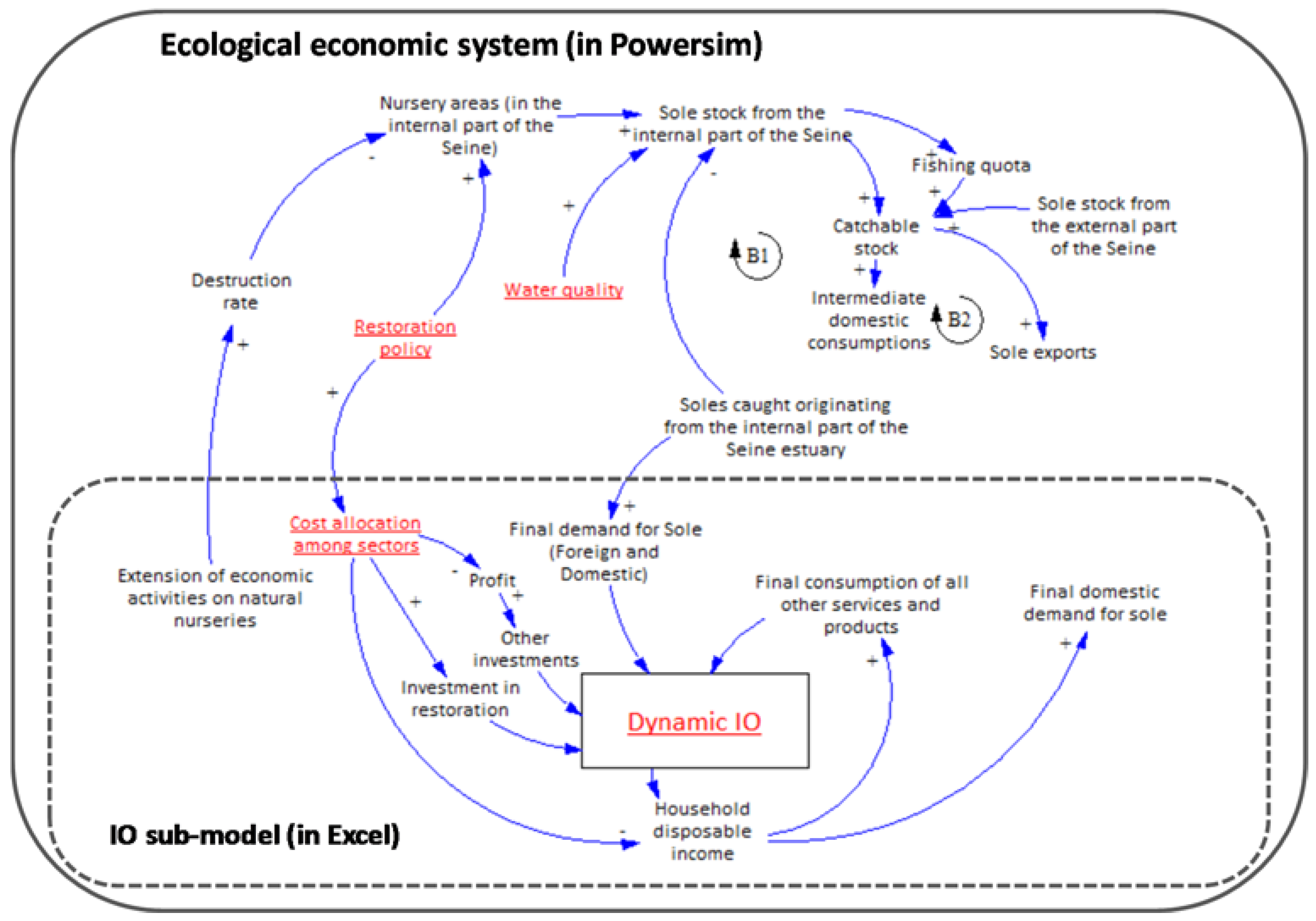
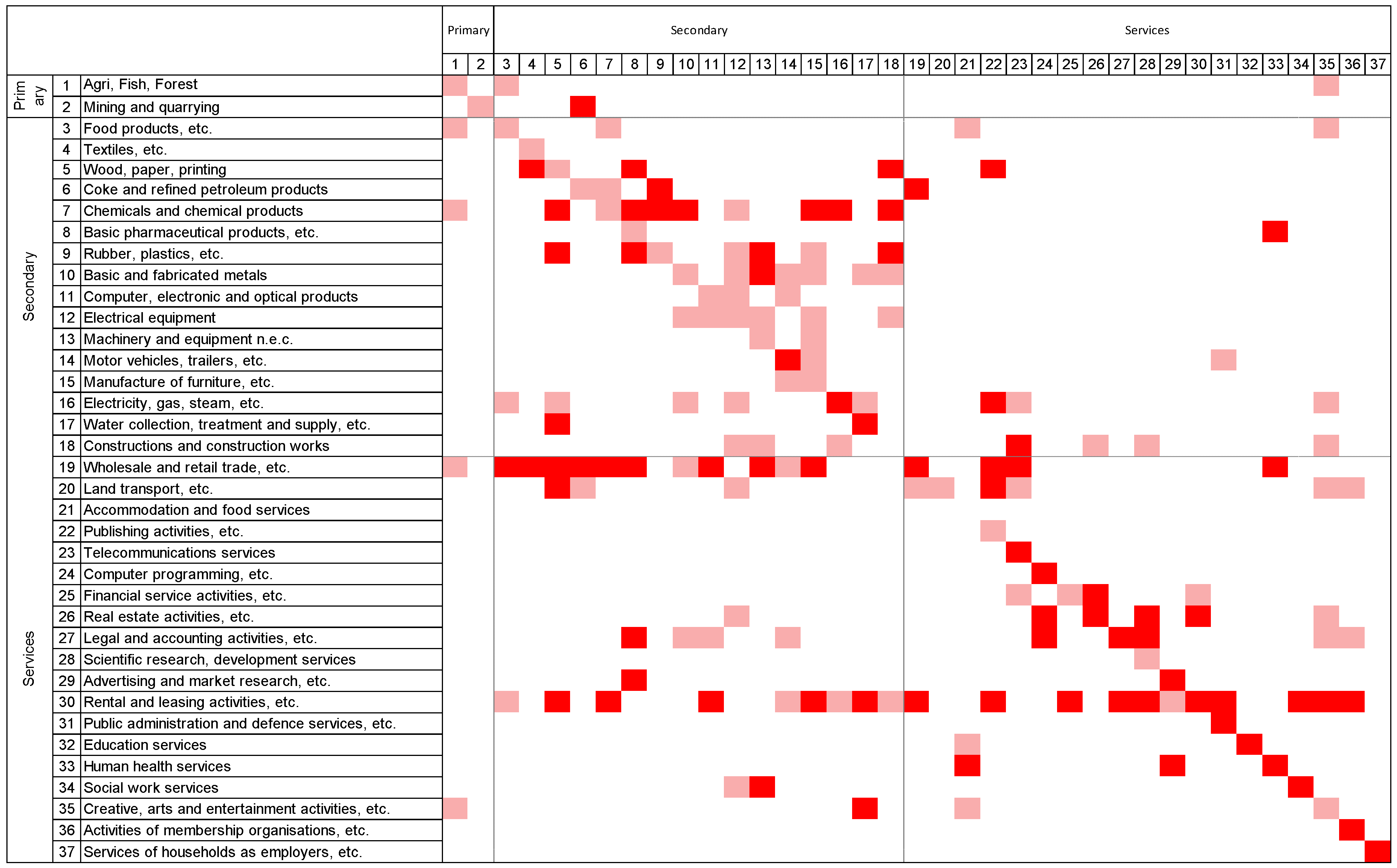
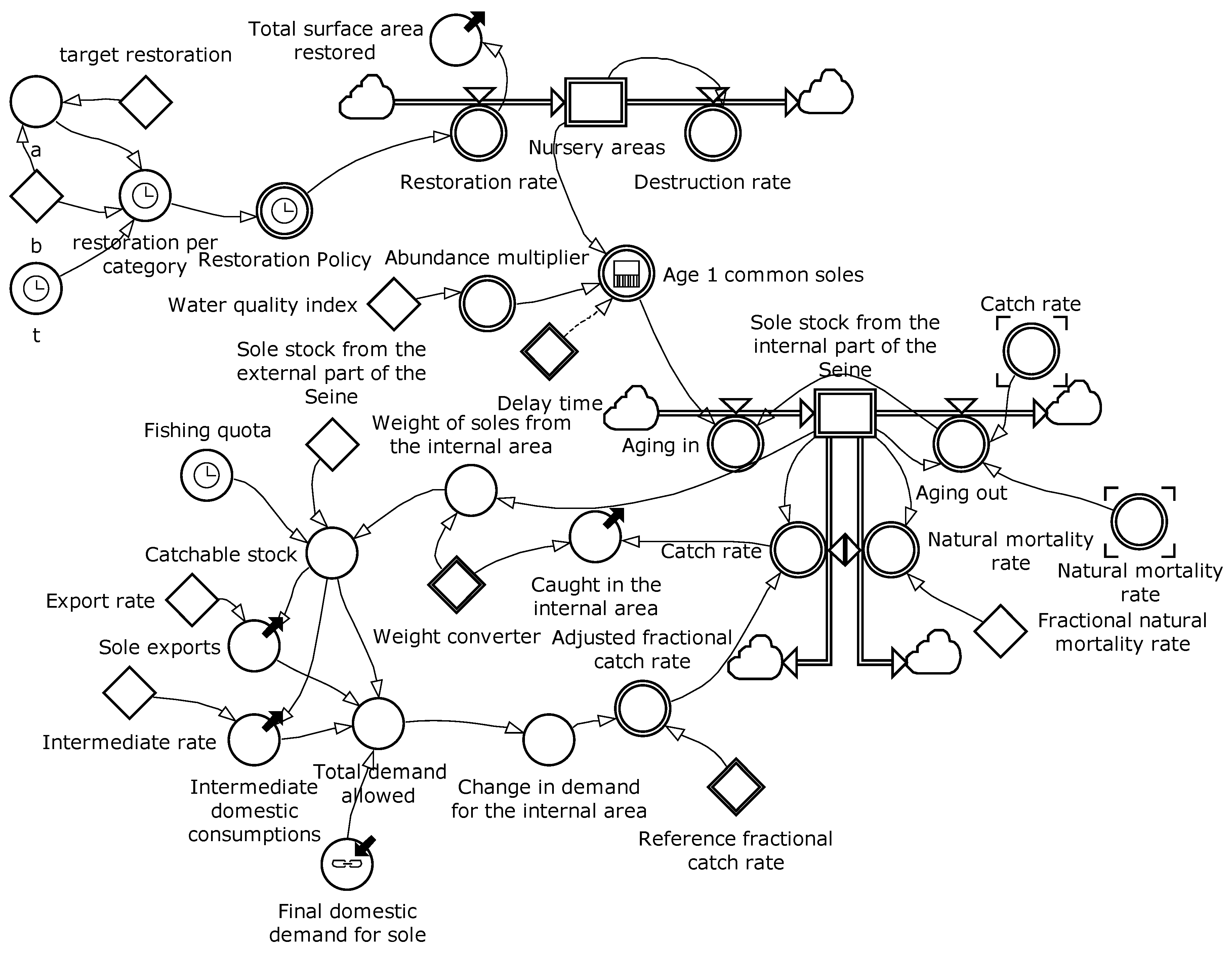

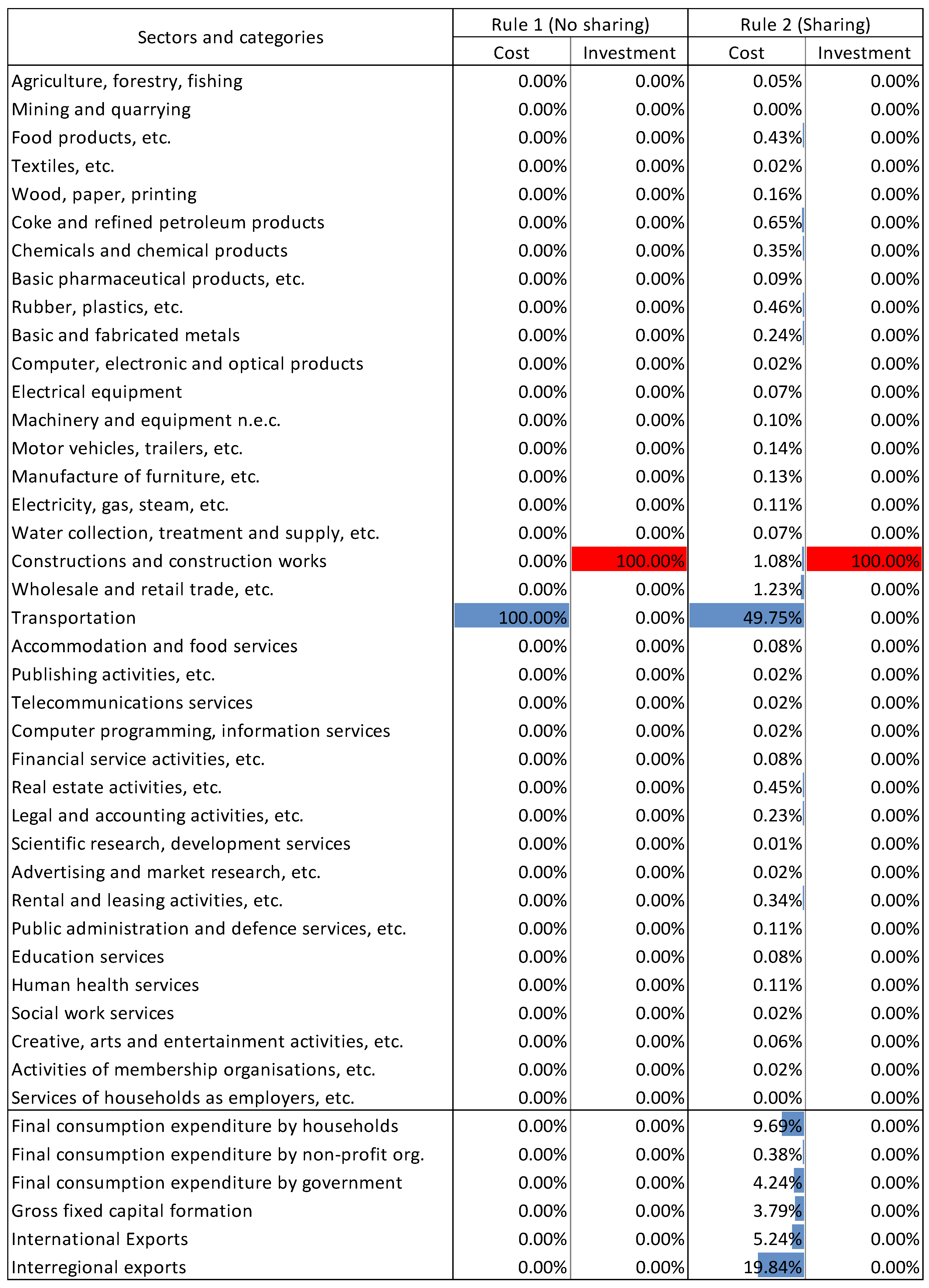

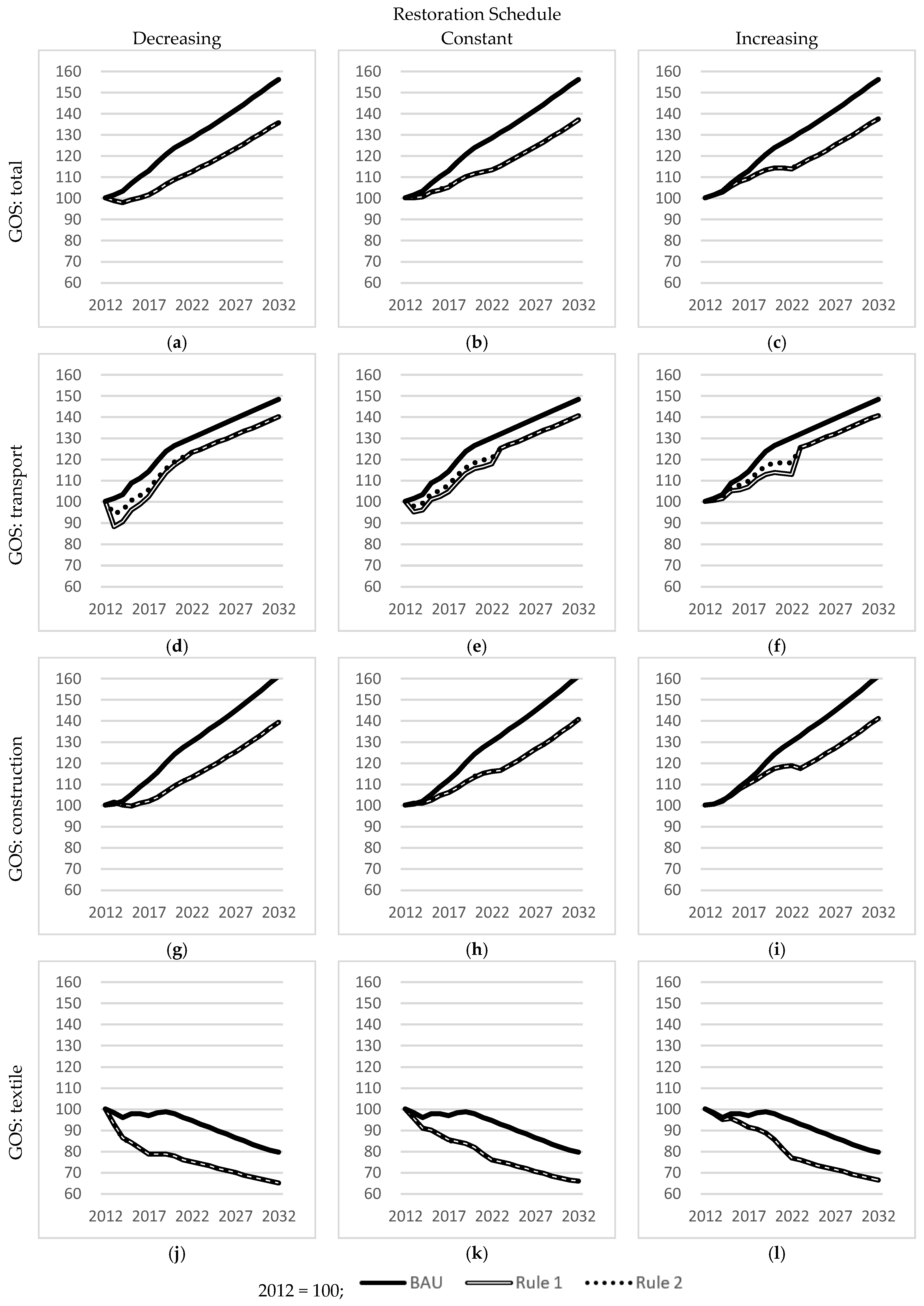
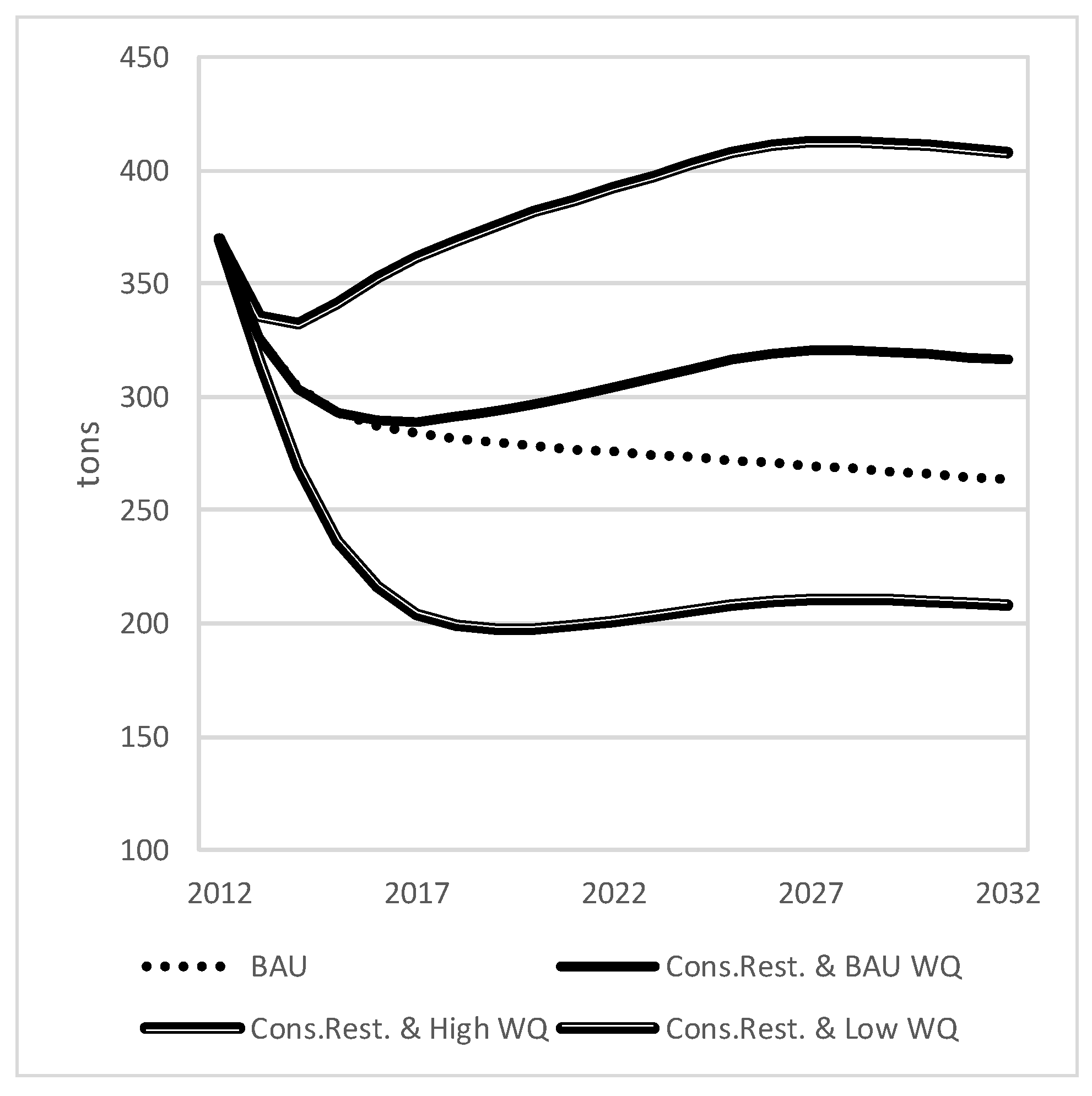
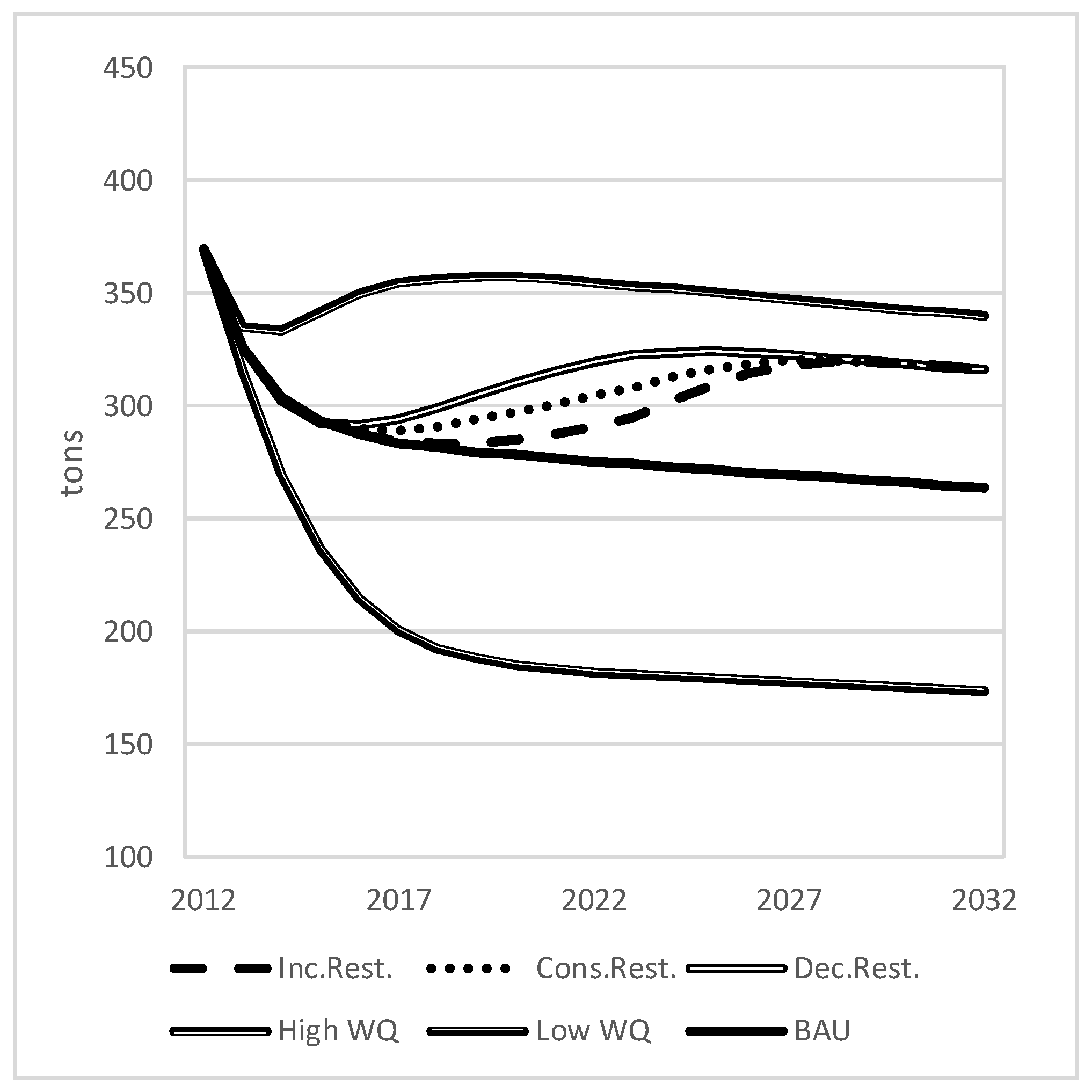
| Buying Sector | Final Demand | Total Output | |
|---|---|---|---|
| Selling Sector | |||
| Imports | |||
| Value Added | |||
| Total Outlays |
| Policy Impact Assessment | Policy Sensitivity Analysis | Outcome Indicators (Dynamics and Cumulative Values) | ||
|---|---|---|---|---|
| Restoration Schedule | Cost Allocation | Water Quality | ||
| Business as usual (BAU) | no restoration | 0.77 | Economic outcome indicators 1. GDP (M€) 2. Disposable income (M€) 3. Gross operating surplus (GOS) (M€) Ecological outcome indicators 4. Soles caught (originating from the internal part of the Seine estuary) (tons) 5. Nursery areas (km2; Total Economic Value (TEV) excluding food and nursery services in M€) | |
| Scenarios | 1. Increasing 2. Constant 3. Decreasing | Rule 1. No sharing Rule 2. Sharing | [0.50, 1.00] | |
© 2018 by the authors. Licensee MDPI, Basel, Switzerland. This article is an open access article distributed under the terms and conditions of the Creative Commons Attribution (CC BY) license (http://creativecommons.org/licenses/by/4.0/).
Share and Cite
Uehara, T.; Cordier, M.; Hamaide, B. Fully Dynamic Input-Output/System Dynamics Modeling for Ecological-Economic System Analysis. Sustainability 2018, 10, 1765. https://doi.org/10.3390/su10061765
Uehara T, Cordier M, Hamaide B. Fully Dynamic Input-Output/System Dynamics Modeling for Ecological-Economic System Analysis. Sustainability. 2018; 10(6):1765. https://doi.org/10.3390/su10061765
Chicago/Turabian StyleUehara, Takuro, Mateo Cordier, and Bertrand Hamaide. 2018. "Fully Dynamic Input-Output/System Dynamics Modeling for Ecological-Economic System Analysis" Sustainability 10, no. 6: 1765. https://doi.org/10.3390/su10061765
APA StyleUehara, T., Cordier, M., & Hamaide, B. (2018). Fully Dynamic Input-Output/System Dynamics Modeling for Ecological-Economic System Analysis. Sustainability, 10(6), 1765. https://doi.org/10.3390/su10061765






